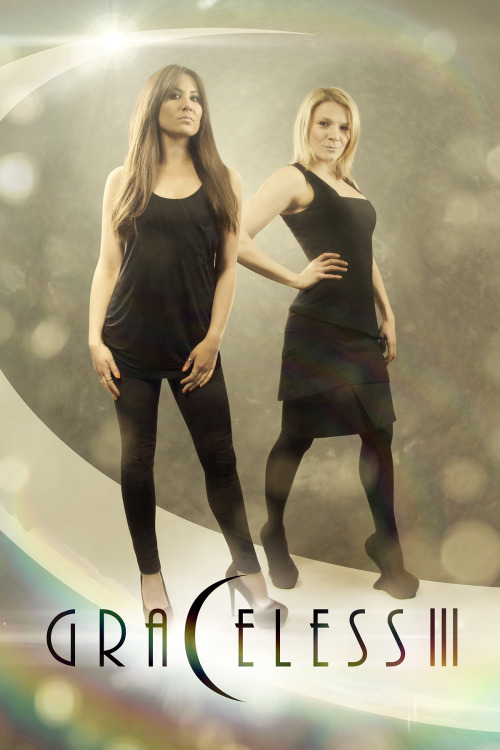After episode 695 (Survival, part 3)
Shakedown - Return of the Sontarans, premiered 1 December 1994
<< back to 1993
Earlier this month, TV Choice gave a special award to Doctor Who for reaching 50. Peter Davison made a short speech:
Five years after the last episode had been broadcast, there was still no prospect of new Doctor Who on TV. Yet there was an audience for books, videos and magazines - a grown-up audience with disposable income. The Dreamwatch convention even produced its own original straight-to-video adventure, Shakedown - which my friend Jason Haigh-Ellery worked on.
Phoenix Ryan didn't happen, but as part of the negotiations Haigh-Ellery was required to set up a production company. So, on 21 June 1996 he formally registered company 03217457 - Big Finish Productions Limited.
We will speak more of Big Finish later.
Next episode: 1995
Shakedown - Return of the Sontarans, premiered 1 December 1994
<< back to 1993
 |
| Susan and Ace? Shakedown (1994) |
"When Doctor Who was taken off the air in 1989, it seemed unlikely it would ever return - but we had forgotten about the fans, the people who had grown up watching and being inspired by the show."A few years ago, I traced one thread of how that happened - starting in 1994.
Five years after the last episode had been broadcast, there was still no prospect of new Doctor Who on TV. Yet there was an audience for books, videos and magazines - a grown-up audience with disposable income. The Dreamwatch convention even produced its own original straight-to-video adventure, Shakedown - which my friend Jason Haigh-Ellery worked on.
"‘Keith Barnfather had been offering [the convention] Downtime,’ says Haigh-Ellery. The script for this was by Marc Platt, and reunited several of the Doctor’s companions – a major selling point for fans. ‘But it just wasn’t ever going to get off the ground,’ Haigh-Ellery remembers. ‘That was nothing to do with rights but the availability of the actors. Kevin Davies heard about this, and said, “I’ve got this idea for a Sontarans story.”’
... The Sontarans would be just one way of drawing the fans to Shakedown, as the project was christened. The script would be by veteran Doctor Who writer Terrance Dicks and the production could also use ‘name’ actors when casting its several human characters. Because these were new roles, actor availability was no longer a problem – if one former Doctor Who star could not make the proposed shooting dates, they could go to another. The new roles also appealed to the actors.
Me, Bernice Summerfield - The Inside Story (2009), pp. 95-6.
"Directed by Kevin Davies, Shakedown was shot on location at HMS Belfast, a former frigate docked on the south bank of the Thames, in the summer of 1994. The cast was largely culled from Doctor Who and Blake’s 7, and included Ace-actress Sophie Aldred in the role of Mari. The bitchy, cowardly character was specifically written to be a million miles from Ace.
‘It’s always lovely to be given something different to do,’ says Aldred. ‘Ace had been going a long time even then, and there’s only so much you can dig into her past. She’s had everything analysed, every part of her. So actually to play a different part and confound audience expectation is fantastic. I think that’s really a kind of carry-on from the TV series, where people like Sheila Hancock and Dinsdale Landen completely relished play baddies. It’s always more fun to play the baddie, let’s face it.’"
Ibid., p. 56.
"The project got moving quickly. ‘Within a couple of weeks,’ says Haigh-Ellery, ‘everything was signed, sealed and delivered. It was that fast.’ Gary Leigh was executive producer, with director Kevin Davies and composer Mark Ayres also producing. How did Haigh-Ellery get involved? ‘I’d done productions, I was really keen to do it and also I’m a businessman. I’d worked with Gary on his magazine so he trusted me. He said, “Can you help me out?” So I came in as associate producer.’ What is the role of an associate producer? ‘As I discovered on that shoot, it was to stop the executive producer from killing the director! It was quite fraught, as we were all very honest about in the Making of Shakedown video. I think the film is great, don’t get me wrong. We were doing a Terrance Dicks Doctor Who script by any other name!’So Haigh-Ellery went it alone, commissioning Paul Cornell to write an original science-fiction drama, Phoneix Ryan, that he hoped would star Sophie Aldred. He was in negotiations with the Sci-Fi Channel to co-fund the project (as they had done on the PROBE series written by Mark Gatiss, which also starred characters and actors from Doctor Who).
The production went over budget, but by this point Haigh-Ellery had got the family business into much healthier shape. ‘I was able to say to Gary Leigh, “Don’t worry, I’ll cover it.” It was good I had the money to do that.’ Yet it had been a long slog to reach this point. ‘That two weeks filming on Shakedown was my first holiday since 1988,’ he says. ‘You wouldn’t think it was a holiday, but I did.’
How successful was Shakedown? ‘It made its money back and it’s still earning money today,’ says Haigh-Ellery. He was keen to start work on a follow-up project, but others did not share his enthusiasm. ‘Gary Leigh will say himself that he found Shakedown quite difficult,’ he continues. ‘We talked about Shakedown 2, and Gary was like, “Yeah, but I’m not doing it now.”’"
Ibid., p. 96
Phoenix Ryan didn't happen, but as part of the negotiations Haigh-Ellery was required to set up a production company. So, on 21 June 1996 he formally registered company 03217457 - Big Finish Productions Limited.
We will speak more of Big Finish later.
Next episode: 1995




.jpg)



























